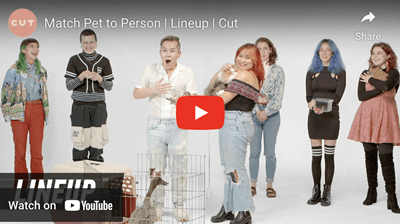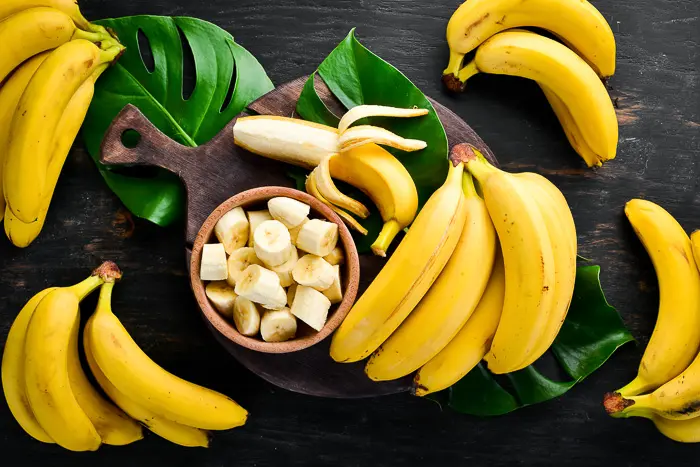Cats can slow or stop eating for a multitude of reasons. Whether you have a cat that is a picky eater, a stressed pet, or even if you feel that your feline friend is under the weather, your cat can only go without eating for so long without health problems becoming a concern. Find out how long can a cat go without eating and what you can do if they stop eating.
Dr. Jess explains it all below:
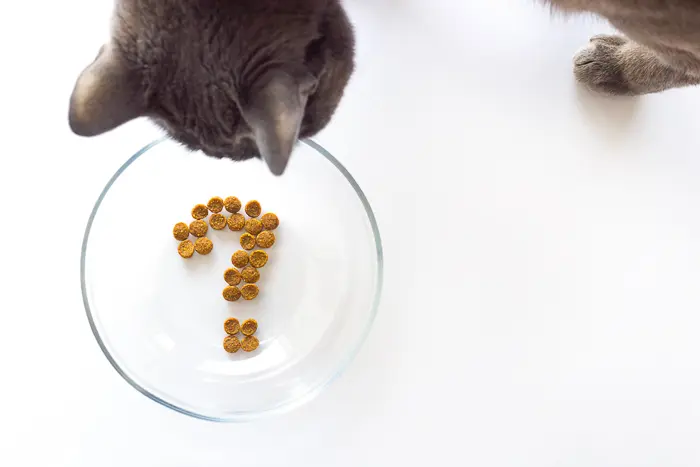
Let's Talk Cats:
Cats, also known as felines, are small mammals that are a popular choice in house pets. There are tens and tens of different cat breeds in the U.S. and world-wide.
Not only are there domesticated cats, but there are farm cats that are primarily used for hunting rodents, as well as feral cats that are not tamed, the exact opposite of a domesticated house cat.
Some domesticated cats are bred to be show cats and enter into shows to compete with other cats of the same breed over their conformation, or how closely they are built like how the breed was intended.
Cats are natural-born hunters, chasing and hunting prey such as mice, rats, and other small rodents.
Cats, being mammals, have fur, produce milk and nurse their babies, have sharp pointed teeth and retractable claws to help hunt down their prey and to protect themselves.
A healthy cat should be on a routine eating, drinking, urinating, and defecating schedule.
Their claws also help them climb.
Cats are quite fast and nimble.
They are playful and curious.
Cats can range in size and shape, with most cats weighing between 10 – 15 pounds as healthy active adults. Of course there are always outliers to both ends of this spectrum.
Cats can live up to 20+ years old if very lucky – remember the old adage… cats have 9 lives! 😉
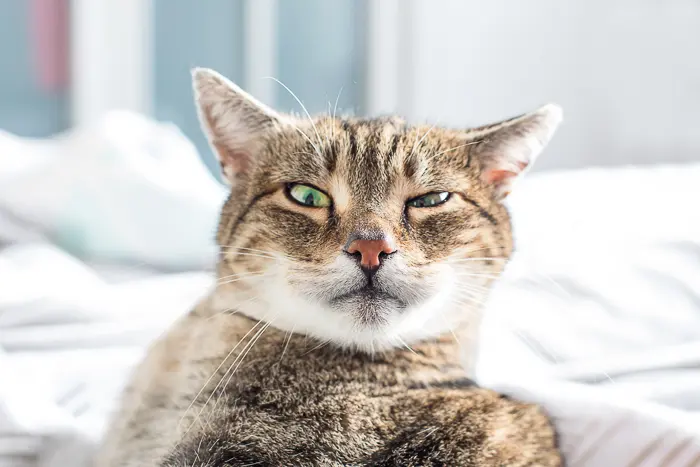
What Do Cats Eat?
This is a hard question to answer because each cat is going to be so different from the next.
Let's start with this – cats are carnivores, meaning that they eat meat. This is great news since they are natural born hunters!
That being said, most cats prefer meat, or meat-flavored foods and cat treats.
A cat's diet can include many things. It depends on your cat's flavor preferences, their medical conditions, their stage of life, and your living situation and your preferences too.
Most cats that I have seen in practice, eat a selection of commercial cats foods, including wet and dry foods.
Dry kibble is ideal for cats that have no problem chewing their food. There is the added benefit that the texture of the dry kibble helps to keep the teeth clean.
Wet food is softer and easier to eat and also has a much higher moisture content than dry kibble does. The extra water content in wet food will help to keep your cat hydrated.
Some clients get their cat's food through brick and mortar stores like PetsMart or Petco, others order online through stores like Chewy like me, and others purchase commercial feed that needs a prescription from a veterinarian because of specific medical concerns.

Cats need a complete and balanced diet.
Whichever food you choose for your cat, whether it is a commercial food or another protein source, fresh meat or store-bought kibble, it needs to have the AAFCO label indicating the diet is complete and balanced for your cat’s life stage.
AAFCO approved foods have gone through testing and compliance to make sure that the diet is safe and healthy for your pet.
Check that label small print! Look for the AAFCO statement that reads “complete and balanced nutrition for cats based on AAFCO feeding trials” on the label.
The AAFCO (American Association of Feed Control Officials), tests pet feeds to see the nutritional makeup in the foods that you are serving to your pet.
Some foods “meet the requirement” that the AAFCO sets forth during their testing, but they have not actually been tested by the AAFCO.
Be careful of the tricky language, as it could mean a big difference to your cat!
If your cat's commercial food is the only food that you are offering to your cat or kitten, make sure that it is “complete and balanced”, meaning that your feline friend will not need to be supplemented with anything because the food you are giving them has all the daily nutritional requirements necessary for proper growth, development, and daily management.
Be very concerned if your cat food does not describe the above verbiage.
Cats can get everything that they need from their AAFCO-approved kibble or canned food because they are complete and balanced.
There are a few ingredients that should be avoided in a cat's food.
Milk has been misrepresented as a healthy snack for our feline friends. The truth is that they may like the taste but many kittens and cats can’t handle the milk, leading to an upset digestive system.
Also avoid raw meat ingredients (including fish and egg ingredients) unless approved by your veterinarian beforehand, as these choices may be harboring harmful bacteria or parasites.
Make sure you talk to your veterinarian before starting or changing your cat's diet program!
Also note, that cats need fresh food, free of bugs and other pests, and fresh, clean water.

When Do Cats Usually Eat?
Some cats do well with having scheduled feeding times. Their bodies run best on a schedule. Some cats like to be fed once a day, while others prefer multiple times a day.
Then, there are other cats who like to have their food out for long stretches of time to self-feed when their schedule allows them the opportunity to snack – I like to call these cats the “grazers“.
Some cats are allowed the choice of when to eat or how many times their owners can offer them food.
Other cats needs to eat at certain times or have a certain number of times they must eat each day, due to medical conditions or medications that they may be taking.
Talk to your veterinarian about how often or at which times, you should be offering food to your cat.

Why Do Cats Stop Eating?
Why do cats stopping eating?
Well, this is a difficult question to answer because there are 1000 reasons why a cat does anything – they do what they want.
However, there are a few common medical reasons why your cat may slow down and eat less or stopping eating all together that I have dealt with in my years as a veterinarian. Some common reasons include:
- Your cat doesn't feel well or is sick: When your cat is under the weather, they may not be up for eating much or anything at all. Even vaccinations can make them feel like taking a step back from their food bowls. When your cat isn't well, one common sign many pet owners will notice, is that their cat is not wanting to eat like they normally do.
- Your cat is scared or angry: When your cat is scared of something in their surroundings, particularly if it is near their food source or reminds them of something near their food source, chances are that they may ditch their food altogether if they are scared enough. This is seen a lot when traveling with your cat or moving your cat into a new home or welcome a new family member or guest. Same thing goes for an angry cat – until they forgive or forget whatever it is making them angry or upset, they may decide to forgo some or all of heir food for a short while.
- Your cat is a picky eater: If your cat is a picky eater and decides that they do not like their food, some cats will decrease the amount they consume or stop eating all together in protest of something yummier to fill their bellies and appease their palates.

How Long Can a Cat Go Without Eating?
This is a great question! How long can a cat go without eating?
Well it is fair to say that a cat cannot go very long without eating and stay healthy.
If a cat goes too long without eating, they can go through a series of very serious medical consequences.
It is best to always monitor your cat's food intake and when you notice a change, whether it is a decrease in the amount of food ingested, or if they stop eating all together, contact your veterinarian immediately for advice.
They may want to see your cat and run some tests to further evaluate how serious of a problem Fluffy's decreased appetite really is.
To really answer this question – my overarching generic answer is – cats can go 24 hours without eating.
If your cat has not eaten in 24 hours, they need to be seen by a veterinarian immediately in case there is something medically wrong. I don't like pushing the time boundaries here because medical concerns become larger and larger the longer your cat is off of food. So get in contact with your local vet if your cat has not consumed food in the past day.
If there isn't a medical concern at the moment, one could be brewing and forming, the longer your cat is not eating.
I'll explain more about this in the next section on medical concerns.
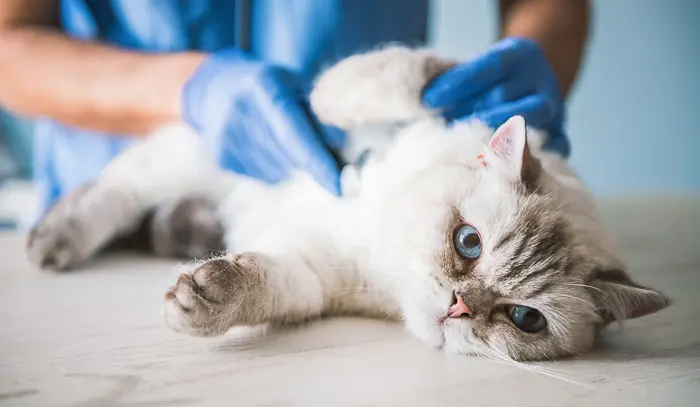
Medical Issues Associated With Cats Not Eating:
When a cat stops eating, many body systems inside of them are affected.
One of the organs that can be affected the most by this anorexia is your cat's liver, during a condition termed hepatic lipidosis.
Hepatic lipidosis, also known as Fatty Liver Disease in cats, occurs when your cat's body tries to find energy sources to replace the food that your cat is no longer consuming.
In a typical animal, when the animal stops eating, the body will reach out and use fat stores in other areas of the body, bringing it to the liver to convert it to a lipoprotein (fat-protein complex), to use as an energy source.
Basically, the fat is taken out of fat cells, brought into the bloodstream, and delivered to the liver where the fat can be converted into glucose, AKA energy!
However, the cat's system doesn't necessarily work that way when it comes to fat usage.
In fact, when a cat stops eating, the fat is brought to the liver, that is not equipped to handle the increased amount of fat.
Fat will accumulate in the liver, making it less and less efficient in its many jobs, such as protein synthesis (production of important proteins), production of blood clotting factors, breakdown of red blood cells, the emulsification of fats, and a handful of other functions.
This fatty liver interferes with the normal functions of the liver and therefore many of the body processes needed for your cat to stay healthy and functioning properly.
Common Signs Seen With Hepatic Lipidosis, “Fatty Liver Disease” in Cats:
- Vomiting and/or diarrhea
- Jaundice: yellowing skin such as around and in the ear and face, yellowing of the eyes, and of the mucous membranes such as the gums
- Lethargy and body weakness
- Depression and/or reclusiveness
- Constipation
- Drooling
Summary:
There are many reasons why a cat may slow or stop eating their food.
The most common reasons why your cat may become anorexic for a period of time include illness, stress, and food preferences to name a few.
No matter what reason your cat has for not eating, cats can only go about 24 hours before you need to seek medical attention.
Cats going longer than 24 hours without eating are predisposing themselves to medical issues, including Hepatic Lipidosis.
Hepatic lipidosis, also known as Fatty Liver Disease in cats, occurs when your cat's body tries to find energy sources to replace the food that your cat is no longer consuming.
When your cat stops eating, the fat is brought to the liver. Your cat's liver is not equipped to handle the increased amount of fat being brought to it.
This new fatty liver interferes with the normal functions of the liver (protein and blood clotting factor production, red blood cell breakdown, etc.) and therefore many of the body processes needed for your cat to stay healthy.
If you believe that your cat has stopped eating, especially if longer than 24 hours, contact your veterinarian immediately.
Your vet will likely you to bring in your pet for an evaluation to make sure that your pet is not in danger.

The information provided in this article is not a substitute for professional veterinary help. For medical advice, contact your veterinarian.
![[Vet Explains Pets]](https://vetexplainspets.com/wp-content/uploads/2024/09/cropped-vetlogo-199x66.png)
